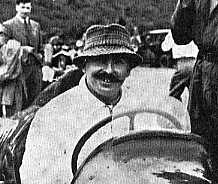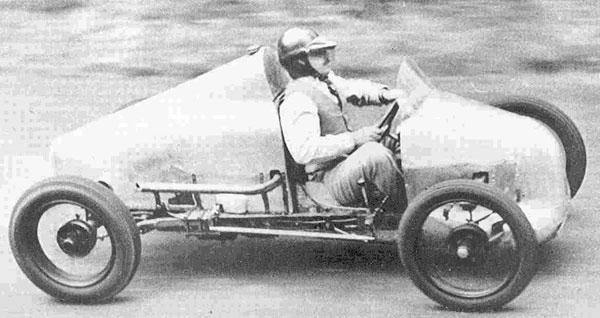On the night of 1st / 2nd July 1940 the crew of this 58 Squadron aircraft were tasked with Ops to attack the German battleship "Scharnhorst" which was in a floating dock in Kiel Harbour. They bombed the target area from a height of 1,100 feet but experienced very heavy anti-aircraft fire. The Whitley was struck and badly damaged, with part of the tail being blown away and the fuselage sustaining a number of holes along with the radio being knocked out. The crew made a safe return to base and landed without further incident at 04.15hrs. They were later commended for a notable war service for their actions on this night. The Scharnhorst was hit by bombs falling from this aircraft and the observer of this aircraft was later awarded the DFM for his actions on this night, after he "held his bombing until the ship literally filled his bomb sight and then let ship and dock have it for all he was worth". Five direct hits were confirmed by photographic reconnaissance a few hours later.
Pilot - F/Lt Frank Aikens RAF (37490).
Second Pilot - Sgt Frederick Young RAF (517288).
Observer - Sgt Nicholas Palmer Simmons RAF (580676).
Wireless Operator - Sgt Ronald Gibson RAF (633366).
Rear Gunner - Sgt G H Cawte/Oawte? RAF (629020).

Frank Aikens was in the RAF before the outbreak of War, he rose to F/Lt on 25th May 1940 and had transferred to 58 Squadron by June of that year. He was Mentioned in Despatches on 1st January 1941, he rose to S/Ldr (temp) in September 1941 and was awarded the AFC on 24th September 1941. He then rose to S/Ldr (war subs) on 14th June 1942, to W/C (temp) on 1st July 1943 and then to W/C (war subs) on 6th October 1944. He remained in the RAF post-War and having his rank of W/C being made permenant in July 1948 he was awarded the Bar to the AFC on 8th June 1950. He retired on 26th December 1957 as a W/C but retained the rank of G/C.

While he was still serving in the RAF he was partly responsible for the re-starting of motor-racing in England after the War. He was one of the organisers of a meeting at RAF Gransden Lodge in July 1947 which was effectively the first meeting sice the War. In this meeting he entered and drove a self-built car, the Aikens 500cc IFS, while he was stationed at Swinderby. The two photographs of him shown here were found on the internet.
Nicholas Simmons was born at Bratton Clovelly, Devon in October 1916 and was educated at Callington County School, Cornwall. He begun a career in the Police but left in 1939 and joined the RAF. He begun his service with 58 Squadron in September 1939. For his efforts in the raid on the Scharnhorst he was recommended for an immediate DFM, the recommendation reads referred to his actions of this raid on Kiel and also stated that "this Air Observer has been actively engaged on operations since, and including, the first leaflet raid on the night of 3rd September 1939. His crew were specially mentioned in Command Routine Orders as a result of a particularly good reconnaissance and leaflet dropping flight they carried out later in September 1939, and again after the first raid on the Scharnhorst in a Kiel dock." His DFM was printed in the London Gazette dated 13th September 1940. The citation reads..
"Sergeant Simmons, at Boscombe Down, was Navigator and Air Observer on 13 convoy escort sorties, totalling 79 hours, 20 minutes. Since his return from that area, he has been Navigator, Air Observer and Bomb Aimer on 24 bombing raids over enemy territory, totalling 161 hours, 40 minutes. This N.C.O. has always set a magnificent example to his fellow Observers in the Squadron, by his fine work, his inimitable enthusiasm and his thorough determination to see any task completed with all possible accuracy. During the first raid on the Scharnhorst in a Kiel dry dock, Sergeant Simmons held his bombing until the ship literally “filled his bomb sight” and then let ship and dock have it for all he was worth. Five direct hits were easily distinguishable from photographs taken some few hours after this raid. The latest effort of Sergeant Simmons is merely typical of the man and the work he invariably does."
Nicholas Simmons later received a commission (44605) on 11th September 1940 and rose through the ranks to W/Co before the end of the War. After serving with 58 Squadron he was to spend a short period of time with the Ministry of Air Production’s (M.A.P) Trans-Atlantic Air Ferrying Service before a posting to 22 OTU as Station Navigation Officer in August 1941. He was Mentioned in Despatches twice before he served briefly with 83 Squadron in April 1943. He was then posted to 51 Squadron in December 1943 where he served until September 1944. He was awarded an immediate Distinguished Service Order, Gazetted on 19th September 1944 and the original recommendation tells the story..
"On 30th June 1944, Squadron Leader Simmons was flying as Air Bomber and Captain of an aircraft detailed for a daylight attack on Panzer divisions at Villers-Bocage. The final order before take-off was that the destruction of this target must be brought about at all costs. Before reaching the target area, there was a small amount of cloud, which Squadron Leader Simmons appreciated might interfere with the accuracy of the bombing, but inspite of the risk of severe flak opposition from a tenaciously held position, and the chance of the bombs from aircraft above him, Squadron Leader Simmons descended from 16,000 feet to 4,000 feet to bomb below the cloud. As was expected opposition was considerable and just after the bombing run had been completed, the aircraft was hit by flak and the Navigator wounded. Squadron Leader Simmons took him aft to the rest position, and was dressing his wounds, when another burst of flak hit the aircraft wounding Squadron Leader Simmons and the Wireless Operator. Squadron Leader Simmons finished dressing the Navigator’s wounds and returned to the navigation compartment, the nose of which had been blown off, to try to carry on with the Navigator’s work. All instruments however were unserviceable and so Squadron Leader Simmons returned to the cockpit, and assisted the pilot to make a successful landing at Ford. At no time from the moment he was hit until the aircraft had landed did Squadron Leader Simmons give any indication that he was wounded. His devotion to duty in descending below cloud in spite of considerable risk, in order to bomb a vital target, and his subsequent gallantry in spite of considerable pain and discomfort, is a splendid example to all. Since being awarded the Distinguished Flying Medal on 12th August 1940, Squadron Leader Simmons has completed 18 sorties with a total of 92 hours operational flying. He has attacked some of Germany’s most heavily defended targets with complete success. As a Bomb Aimer he is outstanding, and although as a Flight Commander he has no crew, he makes a point of operating with the newest pilots in the Flight. On occasions, he has acted as Squadron Commander with outstanding ability and has proved himself not only a splendid administrator but an inspiring operational personality and leader, anxious at all times to operate and to press on against the enemy. Since joining the Royal Air Force, this officer has showed a fine fighting spirit and the keenness with which he sets out to attack the enemy is well known. I most strongly recommend him for the immediate award of the Distinguished Service Order."
Post-war he remained in the RAF and was the Air Staff Officer to the Prime Minister’s Personal Representative in China between 1945 and 1947. He left the RAF in 1957 and died in December 1992. His medal set sold at auction for £9000.
Ronald Gibson received a commission on 1st May 1942 to the rank of P/O on probation (emergency) (48816). He was made a PoW on 28th August 1942 when serving with 155 Squadron as the result of Wellington X3464 failing to return from Ops to Nuremburg. While in captivity he rose to F/O on probation (war subs) on 1st November 1942 and to F/Lt (War subs) on 1st May 1944. He survived the War.
Sgt Young was sadly killed only days after the Scharnhorst raid, on 11th July 1940 he was flying in Whitley N1424 on Ops to Leverkusen when the aircraft crashed in Belgium. He was twenty six years olf and is buried at Schoonselhof Cemetery, Belgium.